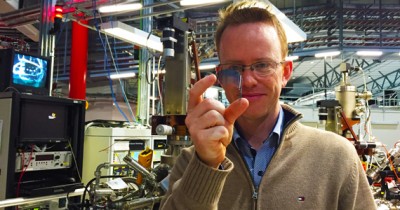Monash helps work on next generation of electronics
A world of transparent, printable, more flexible and cheaper everyday electronics is a step closer after researchers from Monash University and the Australian Synchrotron helped produce the most effective and highest frequency organic transistor in the world.
The new approach to printing large-scale semiconductor sheets using the groundbreaking polymer P(NDI20D-T2), revealed in Nature Communications by Italian researchers from the Center for Nano Science and Technology in Milan, could hasten the development of subtle electronic products such as ID badges woven into clothing, translucent solar panels on windows and virtually invisible electronic sensors and monitors.

Associate Professor Chris McNeill, from the Department of Materials Science and Engineering at Monash University, said the discovery that molecules in the polymer must be precisely aligned informed the new bar-coating technique.
“Many research teams have attempted roll-out printing of the polymer into sheets, much like a mound of dough is rolled flat by a rolling pin, but this has led to lackluster transistor performance,” Associate Professor McNeill said.
“Tightly wrapping a wire around the ‘rolling pin’ bar creates a coat of microscopic grooves 50 microns wide—one twentieth of a millimetre—forcing the molecules of the polymer into an organised pattern during printing, for much greater conductivity.”
Associate Professor McNeill said researchers from Monash University and the Australian Synchrotron provided crucial molecular analysis as the technique was developed.
“Working at the Synchrotron’s Soft X-ray Spectroscopy (SXR) beamline we defined the optimal molecular structure of the polymer, enabling our Italian research partners to print an organic transistor that is not only eight times larger than any predecessor, but boasts a commercially competitive frequency of 3.3 megahertz,” Associate Professor McNeill said.
“We believe the upscaling of organic transistors will enable faster development of next-generation electronics that are pliable, malleable and more affordable, beyond the limitations of bulky silicon-based transistors.”
*

































Ask A Question
Ask us about your program of interest, or if you have a question about our services.
CONTACT US TODAY